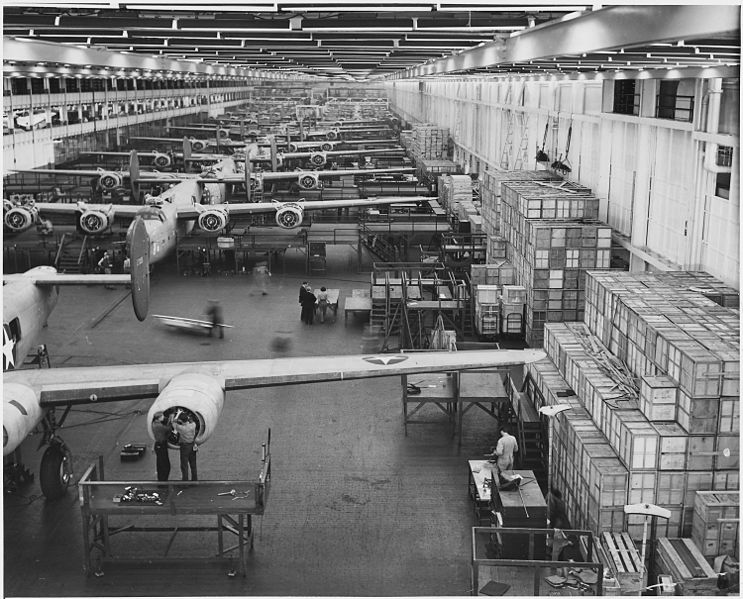Thousands of historical aviation artifacts and eight priceless aircraft were destroyed in a 2004 fire at the Yankee Air Museum in southeast Michigan. Without a permanent home, the museum began the process of starting over in a 40,000-square-foot space at Willow Run Airport outside Detroit.
Now, the museum takes a step forward in their literal rise from the ashes, as they acquire a 144,000-square-foot section of the historic Willow Run bomber plant. The WWII-era factory produced 8,685 B-24 Liberator bombers, or one aircraft every 55 minutes, during the war. From the brink of losing everything, the museum is now moving into a national historic building.
The museum will be the third-largest in the Detroit area when it opens. The funds were obtained from a Kickstarter campaign and a grant from the GM Foundation. The focus of the museum will be on the stories of veterans and its showcase of historical artifacts. It will also encourage children to get interested in STEM careers.
The new building will be a highlight of the museum. This was the plant where Rose “Rosie the Riveter” Will Monroe worked. It was built by Ford and produced thousands of B-24s, only four of which remain. Most of the planes that survived the war were torn up for scrap. One of the museum’s goals is to acquire B-24s, no matter their origin.
It won’t be easy. “No one thought we should keep [the bombers] for posterity,” said Kevin Walsh, the museum’s executive director. “They wanted everything gone.”
Next up, though, is installing heat and utilities in the building (when the plant was disassembled, the original utilities were torn out). The museum will also begin renovating the plant and installing the exhibits. Raising more funds is also an important part of this stage.
While the museum has the money to acquire the building, they are still in the fundraising stage, according to Walsh. “We need a commitment from folks around the country to support the project and build a national-level museum.”
GM is promoting the campaign and using it as an opportunity to market their pickup trucks; Chevy trucks pulled the aircraft into the museum. GM’s interest goes beyond marketing, though. The plant was used by Chevy to assemble transmissions for decades after the war.
The museum doesn’t expect to save any money with the move to the plant. The high costs of renovations will take most of the money. Another $12 million is needed to hit all of the museum’s goals and to realize their anticipated opening date in 2018.
https://www.youtube.com/watch?v=pQCcbbD4xYo
